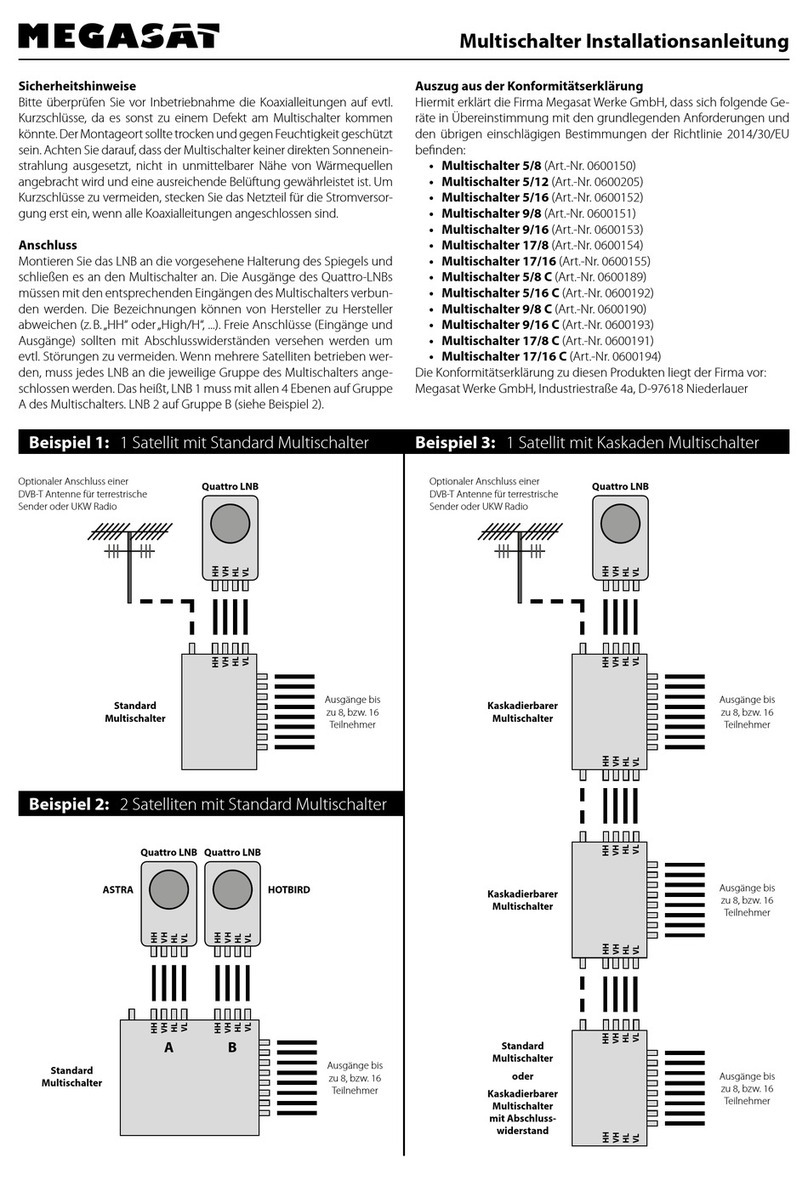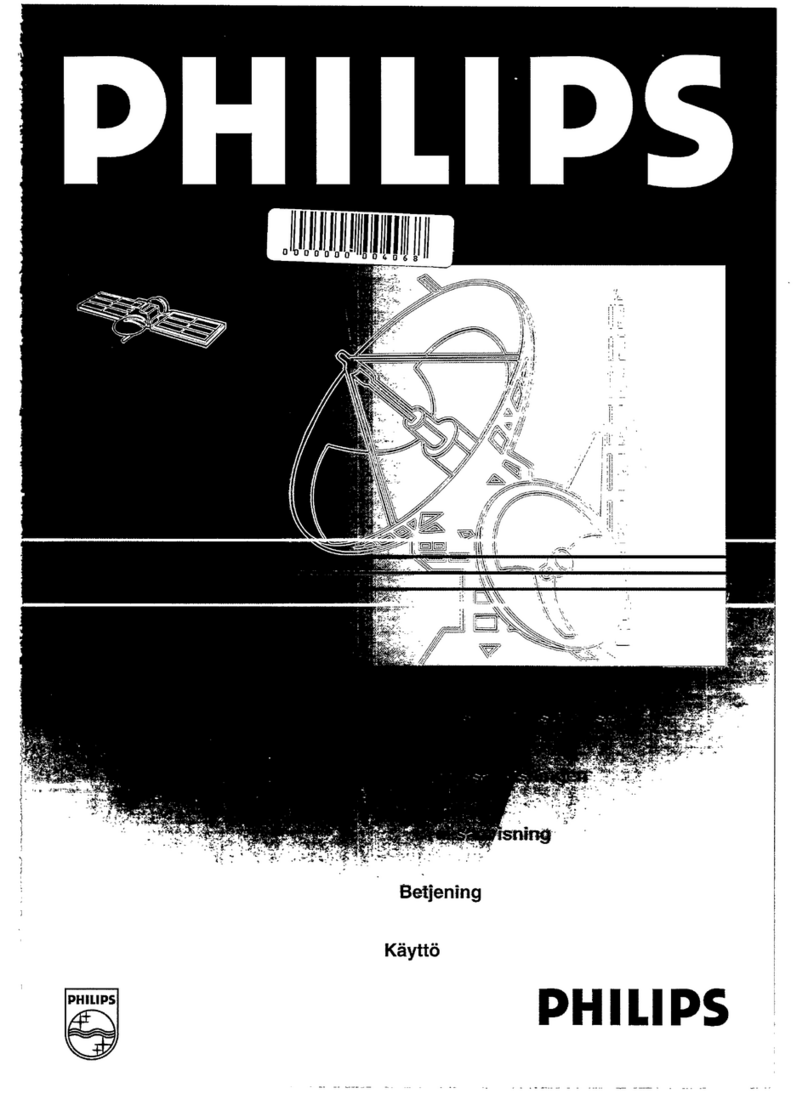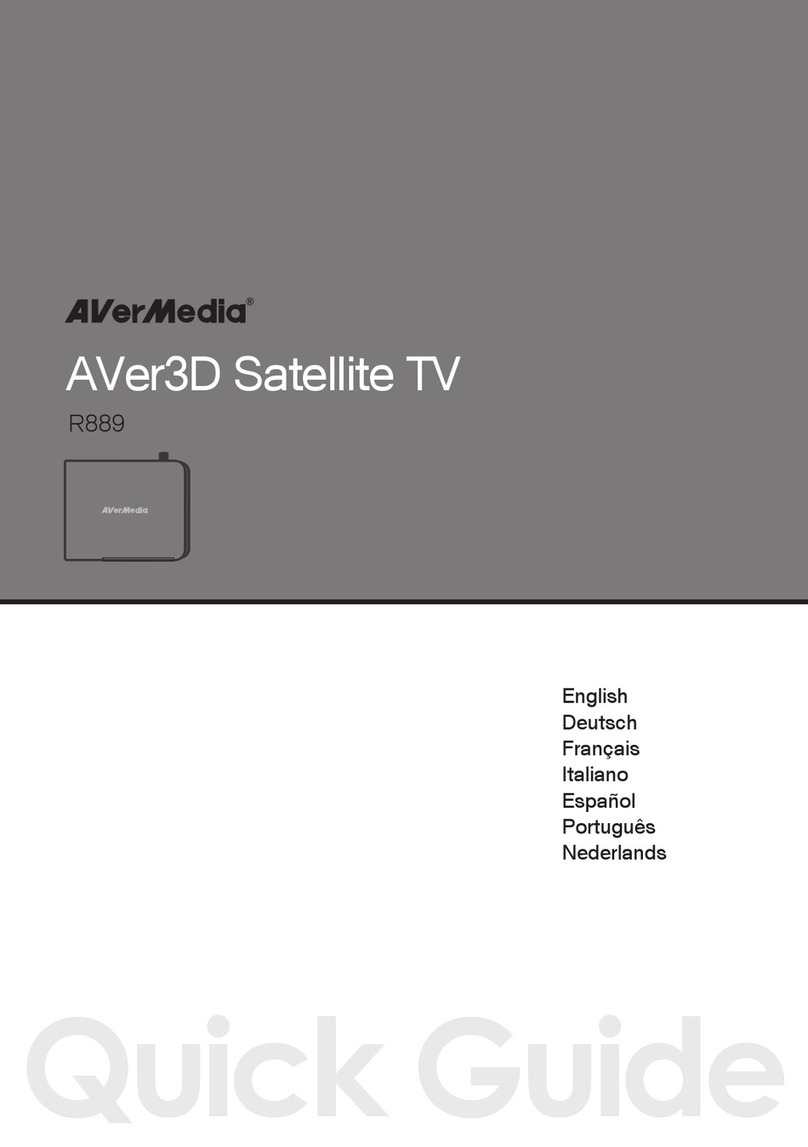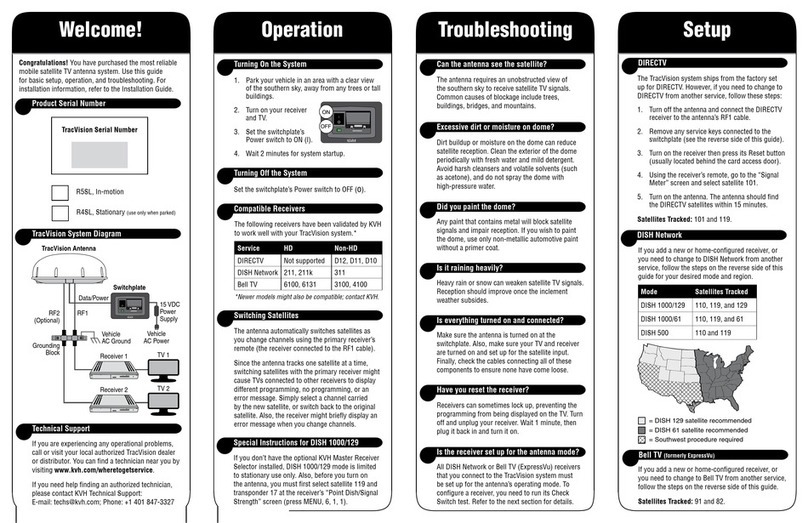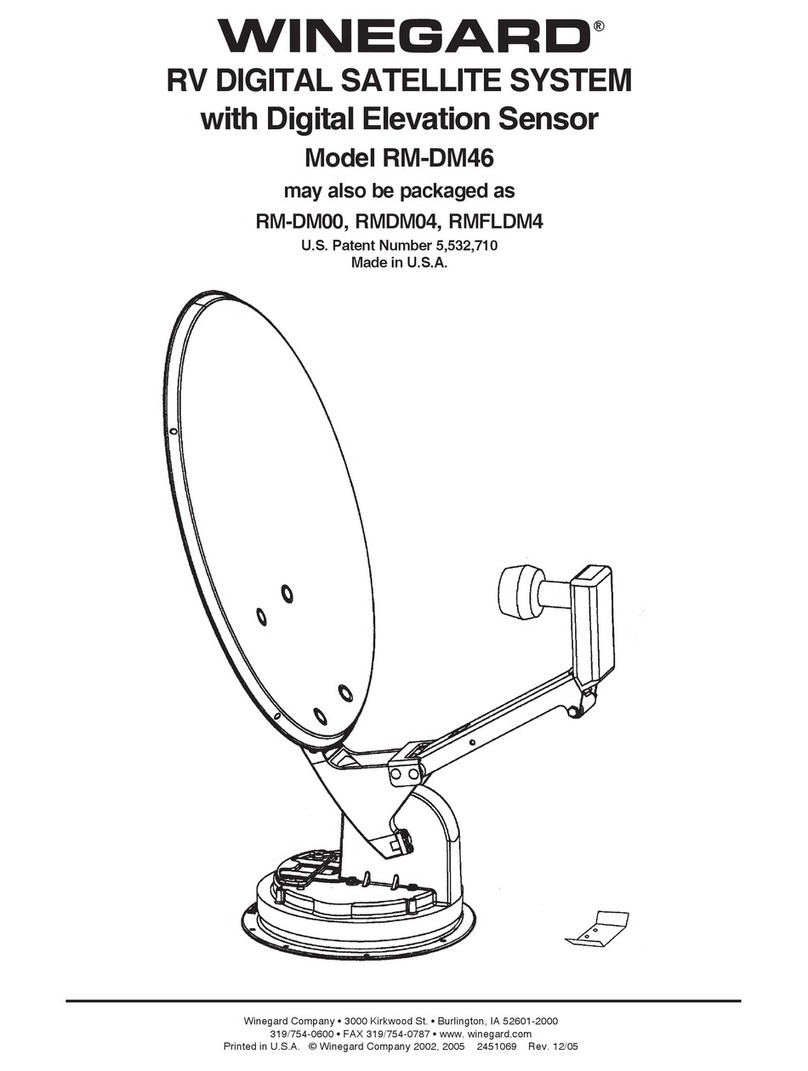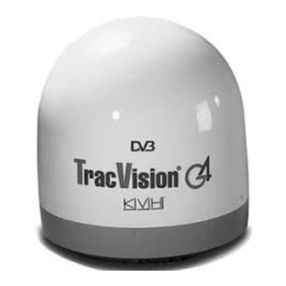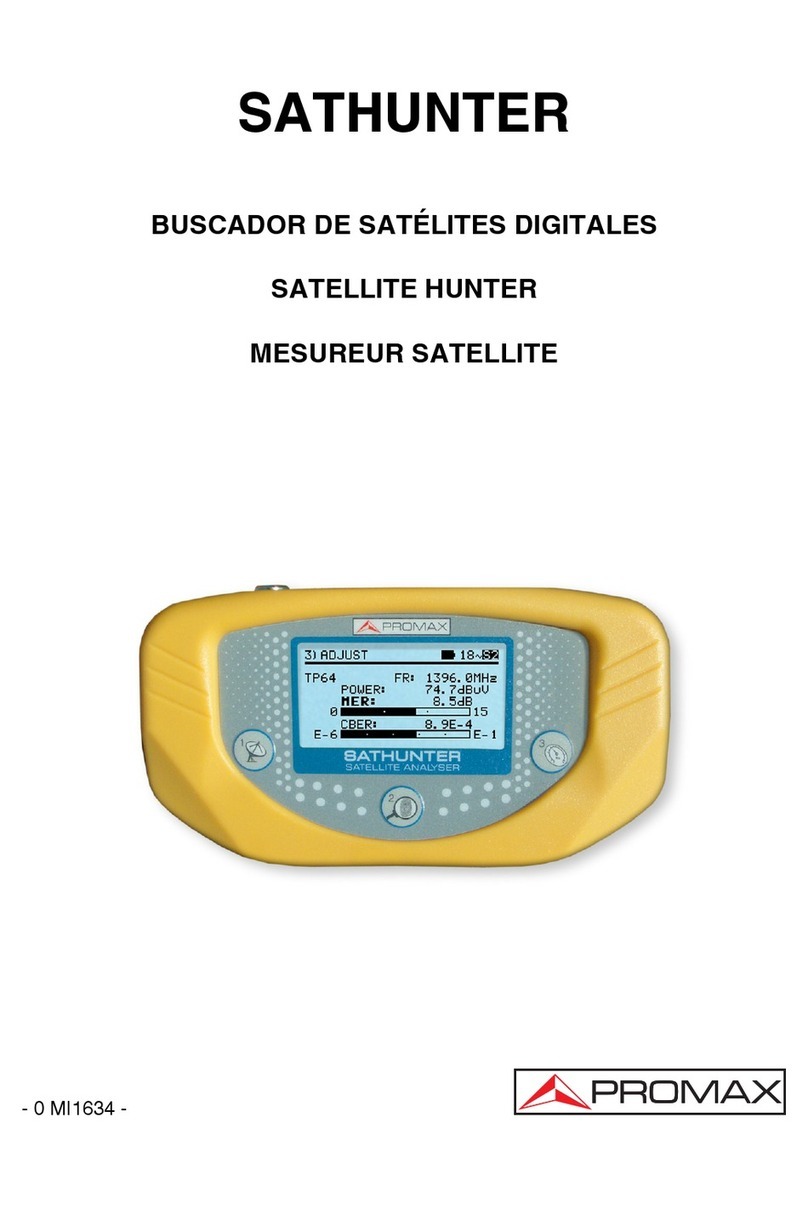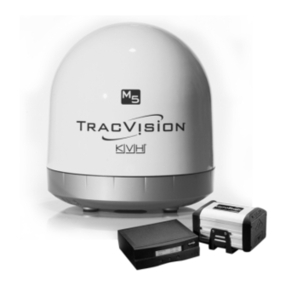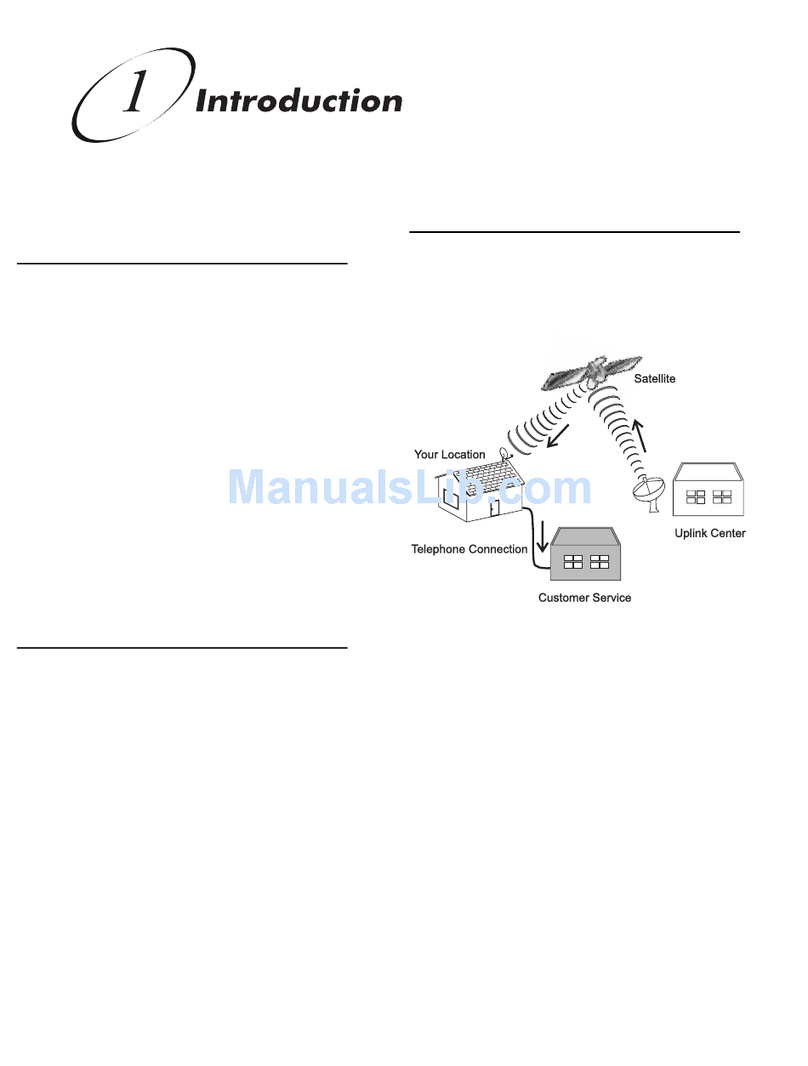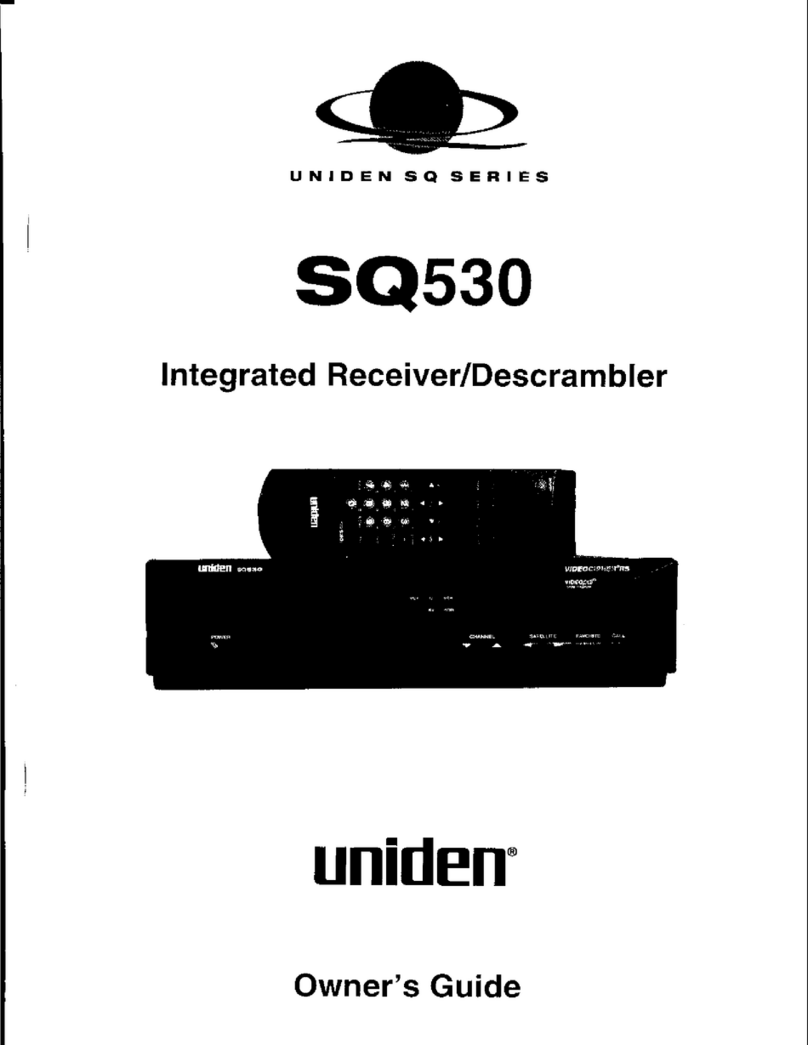GENERAL___________________________________________________________________________________
The receiver modulators PSAP 1 000 VHF, PSAP 3000
VHF, PSAP 4000 Hyperband and PSAP 5000 UHF
With each of these SAT TV receiver modulators, it is possible to convert two TV
satellite signals of equal polarization (horizontal or vertical) from the 1st SAT IF
range (950-2150 MHz) into the TV bands I to band V.
PSAP 1000 VHF, channel line Amodulator (Band I, channels C2 to C4) and
channel line B modulator (Band III, channels S3 to S24 incl. C5 to C12).
PSAP 3000 VHF (Band III, channels S3 to S24 incl. C5 to C12).
PSAP 4000 Hyperband (channels S21 to S41).
PSAP 5000 UHF (Band III, channels C21 to C69).
The boxes are controlled via the GRUNDIG Professional Headend station’s
PSU 8 and PSU 12.
If necessary or desired, a coaxial socket can be retrofitted for a second SAT IF
input into these SAT TV modulators.
Each modulator includes 2 channel lines.
The 2 channel lines of one modulator are indicated as A and B in the display.
Every channel line consists of a SAT tuner, the video and audio processors, and a
single-sideband stereo modulator for processing one TV programme.
Every modulator has one SAT input and one RF output.
The SAT input signal is splitted according to the modulator specification, conver-
ted into a TV reception signal, unified again via a combiner then passed via the
RF output socket on to the RF output collector.
The common output level (channel line A and B) of the twin modulator can be ad-
justed via the mechanical level control on the RF output collector (max. – 20 dB).
After switching the headend station on, the software version of the control unit is
briefly shown in the 2-line LC display.
About 5 minutes after the last key is pressed, the display is automatically switched
off, or the software version of the control unit is displayed.
Note:
If desired, the software version of the control unit can also manually be called
up and displayed as follows:
Press and hold down any two buttons on the control unit at the same time
until the following occurs:
– The display turns dark. After several seconds, the software version, e.g.
V.19 , appears.
It is possible to retrofit two decoder interfaces, one for channel line A, and one for
channel line B, in each of the twin modulators, for the connection of a decoder, a
video camera or a video recorder (see pages 13 to 16).
4
